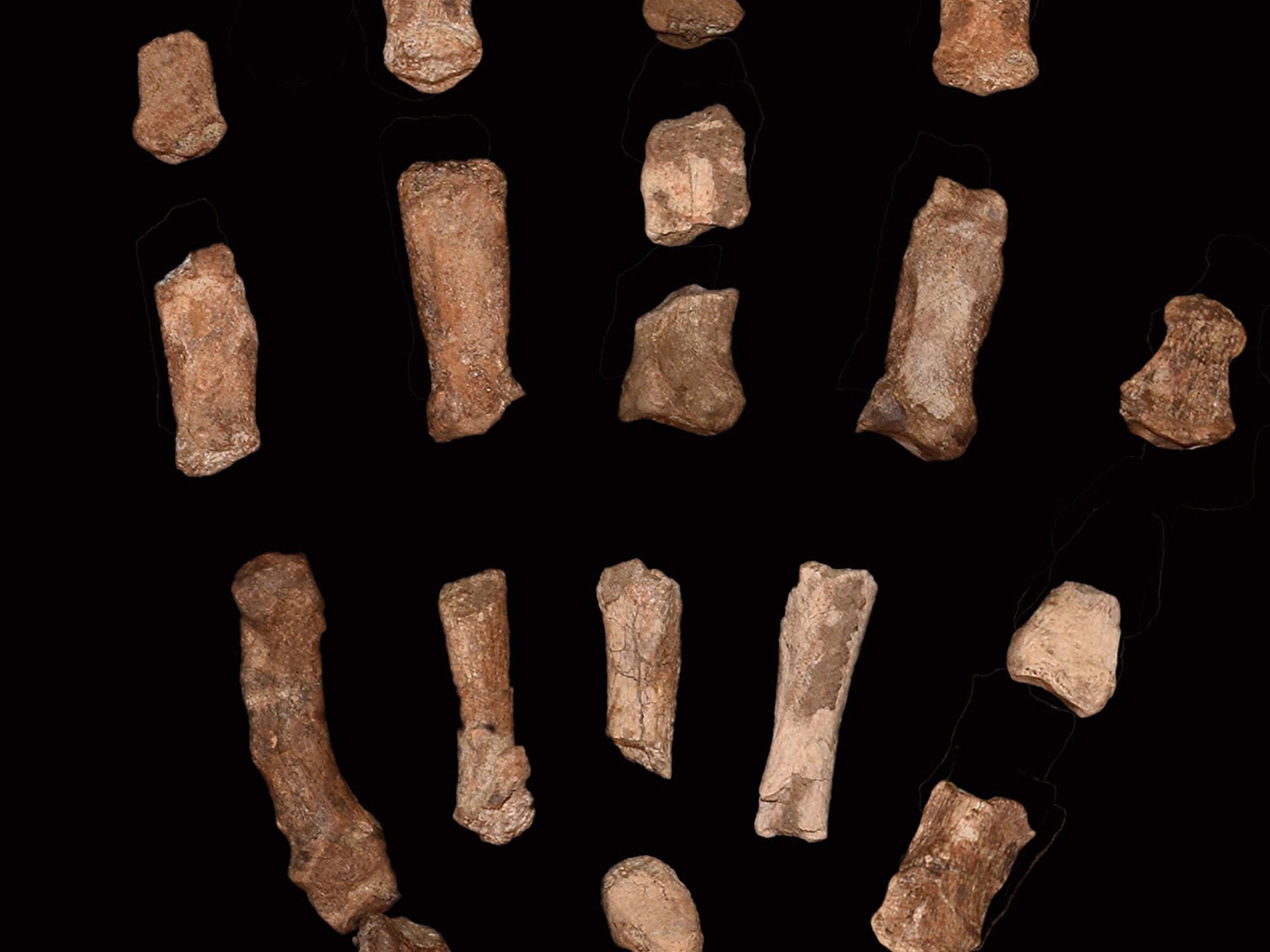
Bonanza of Skulls in 'Pit of Bones' Changes View of Neanderthals
A Spanish cave reveals that Neanderthal faces evolved ahead of their braincases.
Beauty—of a sort—beat out brains among Neanderthals, report researchers analyzing a 430,000-year-old cache of skulls collected from the "Pit of Bones" cave site in Spain.
The Neanderthals were a prehistoric species of early humans, famously stumpy looking, thick boned, and big nosed, who lived in Europe and western Asia before disappearing from the fossil record by about 28,000 years ago. (Related: "Neanderthals ... They're Just Like Us?")
The 17 skulls discovered in Spain's Sima de los Huesos (Pit of Bones) cave and reported in the journal Science show that early Neanderthals sported their telltale "beetle brows" and heavy jaws about 430,000 years ago, long before they evolved Neanderthal features in their crania, including larger brains.
"These are the earliest Neanderthals," says study leader Juan Luis Arsuaga at the Centro Mixto UCM-ISCIII de Evolución y Comportamiento Humanos in Madrid. "They can tell us a great deal about the evolution of Neanderthals, and by comparison, about modern humans."
The new study adds to evidence that the Neanderthals developed their characteristic looks slowly, and patchily, over hundreds of thousands of years, Arsuaga says. The ancient world likely was filled with a potpourri of archaic humans that included these early Neanderthals, he suggests, their numbers waxing and waning between ancient ice ages that arrived every hundred thousand years or so.
"What I have been telling people is that it was like Game of Thrones," says Arsuaga, referring to the popular fantasy book and cable television series. "There were a few spread-out populations, some related, some not, emigrating or going extinct over time. And winter was always coming."
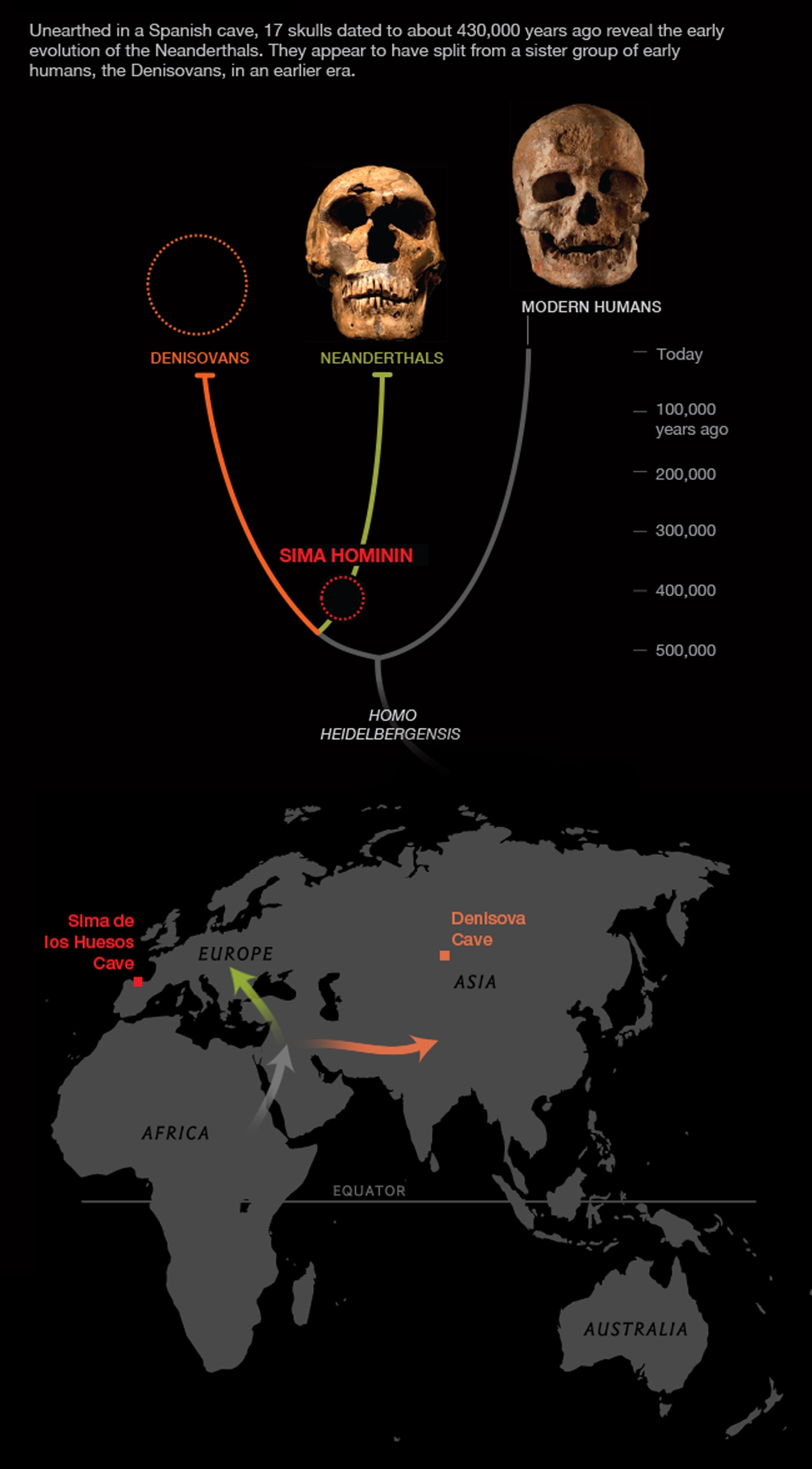
Game of Bones
At the end of a 1,640-foot-long (500 meter) cave in northern Spain, the Sima de los Huesos pit is a deep depression, more than 46 feet (14 meters) below a shaft from the surface. Underneath a layer of dirt filled with cave bear bones, the pit holds an "astonishing, and even beautiful, collection of human fossils," says paleontologist Chris Stringer of London's Natural History Museum by email.
Some 6,500 human bones belonging to at least 28 individuals—the world's largest collection in any one place of ancient human fossils—have turned up in excavations there since 1976. "There are tons of bones," Arsuaga says.
The skulls in the study, seven of them newly described, bear about two dozen facial features, among them the enlarged flat molars, heavy jaws, protruding snout, thick cheekbones, and heavy brows that typify more recent Neanderthals, ones less than 200,000 years old.
While Stringer views the Sima de los Huesos skulls as belonging to early Neanderthals, paleontologist Ian Tattersall of the American Museum of Natural History in New York views them as a separate group of early humans. "The Sima hominids [members of the human family] have a number of Neanderthal features, mainly in the face, but are clearly not full-blown Neanderthals," Tattersall says. (The study itself leaves this open as a possibility, suggesting the Sima skulls may belong to a subspecies of Neanderthals or to a related earlier species.)
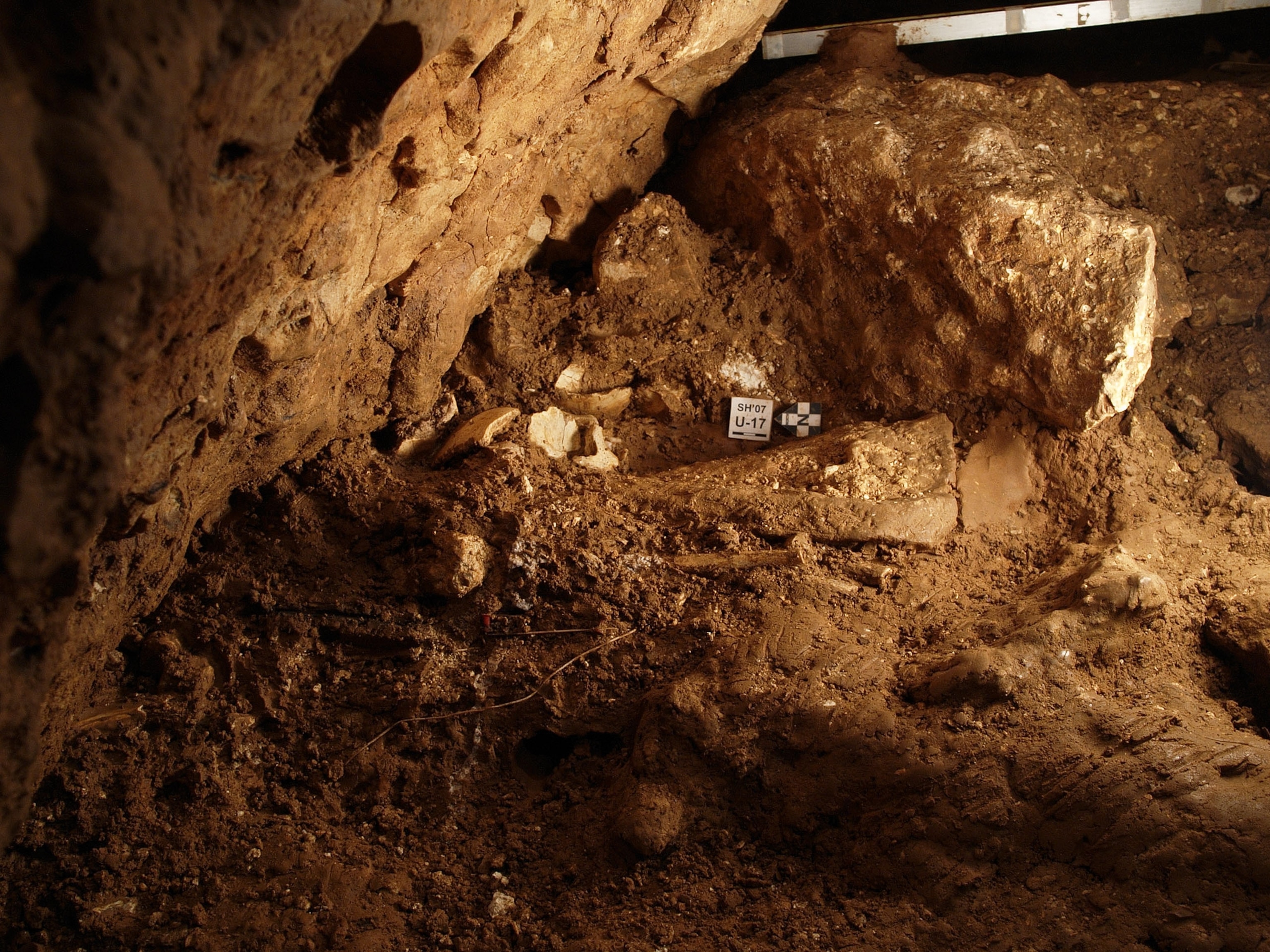
Every Face Tells a Story
The evolution of Neanderthal's doughty looks has been tied to surmounting Arctic conditions during the ice ages. However, the cave site 430,000 years ago was only a little cooler and drier than today, Arsuaga says, arguing against this explanation.
But if the Sima's ancestors had become isolated from other early humans, their distinctive Neanderthal facial features could have evolved randomly through "genetic drift" and become fixed in the population, suggests paleontologist Jean-Jacques Hublin of Germany's Max Planck Institute for Evolutionary Anthropology, in a commentary accompanying the study.
Arsuaga instead suggests that strong Neanderthal jaws may have evolved to maximize bite force in their front teeth, pointing to some change in diet or habits among them more than 400,000 years ago. Only one stone tool, a hand ax, has been found among the fossils at the site, however, so there is nothing to suggest new hunting techniques flourished among the Sima humans.
While they have Neanderthal faces, the skulls in the cave lack the cranial development of later Neanderthals, Hublin notes. (Some had bigger brains than those of modern people, but most didn't.) Later Neanderthals evolved even larger brains than the Sima ones.
Arsuaga suggests the combination of Neanderthal facial features alongside smaller crania in the Sima de los Huesos skulls argues for a branching, bumpy pattern in early human evolution across prehistoric Europe—what he calls the accretion model—rather than a smooth development of the species. There's no guarantee that the Sima Neanderthals were even ancestors of later Neanderthals, he says. They might have belonged to a branch that eventually died out.
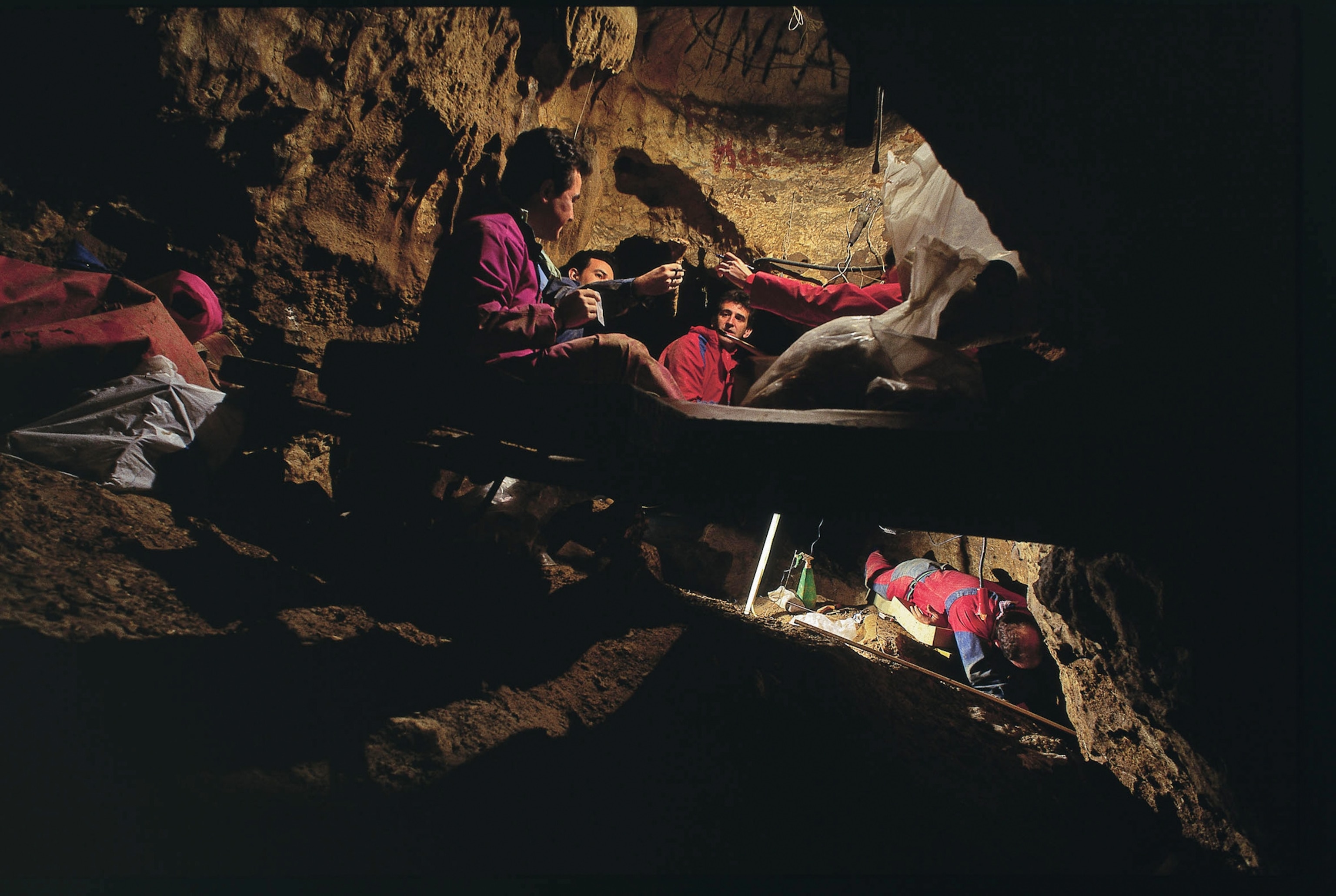
Distant Relatives
Evidence for that sort of bumpy early human evolution came in December, when a team led by Matthias Meyer, also of the Max Planck Institute, reported that maternally inherited "mitochondrial" DNA found in a fossil thighbone at the Spanish cave matched that of a different early human group from Neanderthals. (See: "Discovery of Oldest DNA Scrambles Human Origins Picture.")
Instead, the mitochondrial genes matched those seen in a group called the Denisovans, known only from a Siberian cave. (Read how they were discovered in "The Case of the Missing Ancestor" in National Geographic magazine.) That raised the question of what Russian early human DNA was doing in Spanish fossils.
The Sima team now argues that those genes likely were an inherited leftover from a more ancient human species that lingered in the Spanish Neanderthals, something that Meyer agrees is "very plausible." More recent studies also point to Neanderthals and Denisovans both sharing DNA with more ancient human species.
Modern people of European and Asian descent also share some Neanderthal and Denisovan genes, about 2 percent for the former. That points to interbreeding among modern humans and early human species within the last 60,000 years, when our ancestors left Africa to spread worldwide. (See: "Neanderthal Genes Hold Surprises for Modern People.")
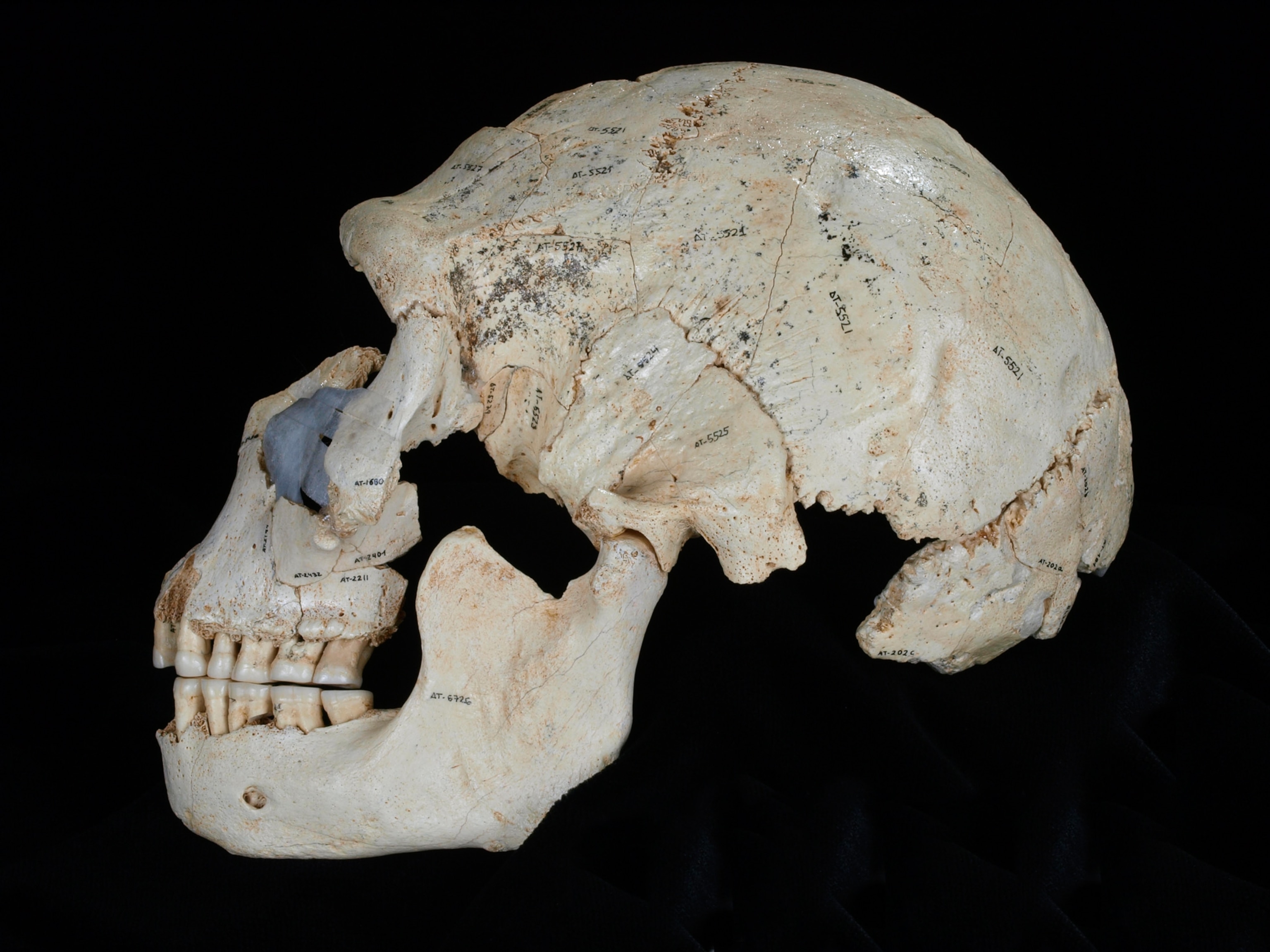
What is really fascinating, Meyer says, is that the Sima de los Huesos site, which has the most complete record of early human fossils from prehistory, is also the only known site with DNA preserved from that earlier period of human evolution.
"This is an amazing coincidence and fortunate for science," Meyer says, by email. "It also means that some of the hypotheses derived from morphological [physical characteristics] analyses may ultimately be testable by means of genetics."
So how did the pit of bones end up full of so many early human fossils? That, says Arsuaga, "is the biggest mystery in paleontology." Some observers have suggested the cave was a death trap, where foolhardy Neanderthals fell to their deaths.
But Arsuaga says the simplest answer is that their fellows deposited them there. "There are still a lot of bones. We may find 50 skulls before we are done."
Follow Dan Vergano on Twitter.







